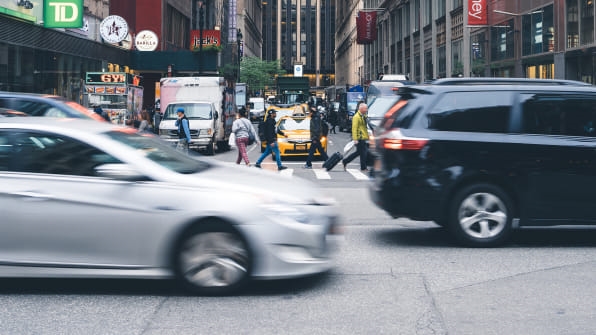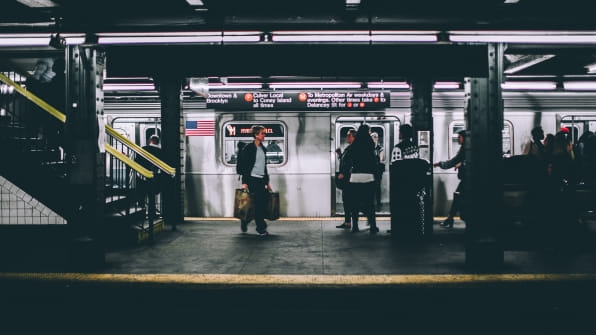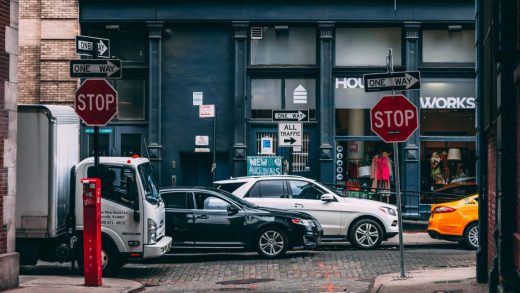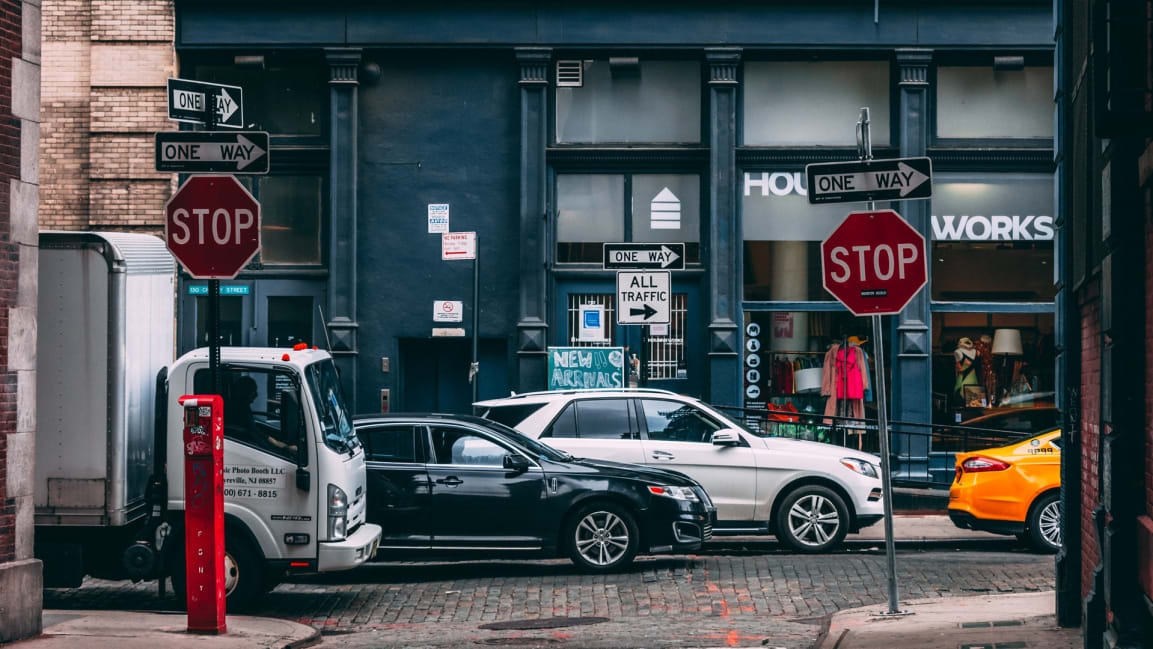New York has a new, bold plan to fix the subways: Make car drivers pay for it
If you live in New York City, or follow its dramas from afar, you know two things: The city’s subway is falling into disrepair, and the mayor and the governor do not get along. But today, it seems that the former dilemma has superseded the latter. New York City Mayor Bill de Blasio has agreed to cooperate with Governor Andrew Cuomo on a 10-point strategy to fix the subway and the Metropolitan Transportation Authority that manages it.
Crucial to this plan is an answer to the classic “how will we pay for it?” question. Cuomo has, since his re-election in November, been vocal about his support for congestion pricing as a means to raise money for the MTA. The scheme would place a toll on cars entering New York’s Central Business District (CBD is the part of the city below 61st Street in Manhattan), both to disincentivize car use in the area and generate a pool of funding for the city’s transit systems. Private cars would be charged around $12 per trip into the CBD, trucks around $25, and for-hire vehicles between $2 and $5. Emergency services vehicles and vehicles designated for transporting people with disabilities would be exempt.

De Blasio has spoken out against congestion pricing in the past, saying that it would increase the cost burden on working people who drive into the CBD. But, as it turns out, wealthier people are statistically much more likely to commute into the city via car, and will be the main source of funding that goes into the “lockbox” created by a congestion fee. Lower-income people, who mainly rely on mass transit to get in from the outer boroughs, will benefit from improvements to the subway and bus systems.
As of today, De Blasio and Cuomo have agreed to jointly backing a congestion pricing plan that would come into effect in 2020 and raise around $15 billion–a significant portion of the MTA’s estimated $40 billion in capital shortfall. Additional taxes on internet services sales and legal marijuana would also deliver more funds to the MTA.
In implementing congestion pricing, New York City would join other cities like London, Singapore, Milan, and Stockholm that have already rolled out similar policies. In addition to the monetary benefits it will bring to the beleaguered MTA, congestion pricing is one of those strategies that addresses several critical concerns in one fell swoop.
One is traffic: In New York City, cars in the CBD move at a glacial pace of 4.7 miles per hour–no faster than an especially quick walker, and slower than a cyclist. A fee on cars will hopefully discourage drivers from entering this morass, and in turn, free those cars that do need to pass through Manhattan to do so more quickly and efficiently.
Another is emissions: Only a fraction of a percent of of all cars on the road in the U.S. are electric, so as long as our roads are clogged with them, our carbon footprint will remain high. Removing polluting cars from city streets will help places like New York rein in emissions. Research from Stockholm has found that congestion pricing results in healthier lungs among residents. From a health and safety perspective, congestion pricing also delivers benefits to residents. Since London introduced congestion pricing, incidences of lethal crashes between vehicles, cyclists, and pedestrians plummeted. In U.S. cities, where deaths by vehicle continue to rise, this type of policy will be vital for protecting people who choose not to travel by car.

On top of congestion pricing, Cuomo and de Blasio have pledged to consolidate all six of New York’s transit agencies–including the MTA, the bus network, and the regional rail networks–into one operation. This, they said in a joint statement, will streamline issues like repairs and generate new ideas for providing services to riders.
An efficient, responsive, and well-funded transit network is possibly one of the most vital aspects for a city aiming to address two of the 21st centuries most pressing challenges: climate change and inequity. New York needs to recognize that its most economically vulnerable residents depend on good and functional transit in order to exist in the city, and the city itself can no longer support the human and environmental dangers that excessive car traffic poses. Congestion pricing is a way to address both, and it’s now incumbent on the city and its leaders to make sure it works as promised.
(8)



